
Tampa Stadium was a large open-air stadium located in Tampa, Florida, which opened in 1967 and was significantly expanded in 1974–75. The facility is most closely associated with the Tampa Bay Buccaneers of the National Football League, who played there from their establishment in 1976 until 1997. It also hosted two Super Bowls, in 1984 and 1991, as well as the 1984 USFL Championship Game. To meet the revenue demands of the Buccaneers' new owners, Raymond James Stadium was built nearby in 1998, and Tampa Stadium was demolished in early 1999.
The USF Track and Field Stadium is a track and field stadium that was built in 1978. The stadium is currently home to the men's and women's track and field teams from the University of South Florida in Tampa, Florida. It also hosted the school's men's and women's soccer programs from 1978 and 1995 respectively through the end of their 2010 seasons.

The University of Tampa (UT) is a private university in Tampa, Florida. It is accredited by the Southern Association of Colleges and Schools. UT offers more than 200 programs of study, including 22 master's degrees and a broad variety of majors, minors, pre-professional programs, and certificates.

Al Lang Stadium is a 7,500-seat sports stadium along the waterfront of downtown St. Petersburg, Florida, United States which was used almost exclusively as a baseball park for over 60 years. Since 2011, it has been the home pitch of the Tampa Bay Rowdies of the USL Championship soccer league.

George M. Steinbrenner Field, formerly known as Legends Field, is a baseball stadium located in Tampa, Florida, across the Dale Mabry Highway from Raymond James Stadium, the home of the National Football League's Tampa Bay Buccaneers. The ballpark was built in 1996 and seats 11,026 people, with an addition in right field built in 2007. It is the largest spring training ballpark in Florida.
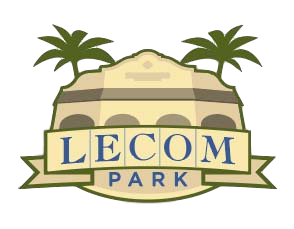
LECOM Park is a baseball field located in Bradenton, Florida. It is the spring training home of the Pittsburgh Pirates and is named after a 15-year naming rights deal was signed with the Lake Erie College of Osteopathic Medicine, which has its main campus in Erie, Pennsylvania, and also a campus in Bradenton. It was formerly known as McKechnie Field, named for Bradenton resident and Baseball Hall of Fame great Bill McKechnie, who led the Pirates in 1925 and the Cincinnati Reds in 1940 to World Series titles. He was also a coach with the Cleveland Indians in 1948.

TD Ballpark, originally Dunedin Stadium at Grant Field, is a baseball field located in Dunedin, Florida. The stadium was built in 1990 and holds 8,500 people. It is the spring training home of the Toronto Blue Jays, as well as home to the Dunedin Blue Jays of the Florida State League and the Dunedin High School Falcons baseball team. The stadium has also been known as Knology Park (2004–2008) and Florida Auto Exchange Stadium (2010–2017).

Al López Field was a spring training and Minor League baseball ballpark in West Tampa, Tampa, Florida, United States. It was named for Al López, the first Tampa native to play Major League Baseball (MLB), manage an MLB team, and be enshrined in the Baseball Hall of Fame. Al López Field was built in 1954 and hosted its first spring training in 1955, when the Chicago White Sox moved their training site to Tampa from California. Al López became the White Sox's manager in 1957, and for the next three springs, he was the home manager in a ballpark named after himself. The Cincinnati Reds replaced the White Sox as Al López Field's primary tenant in 1960 and would return every spring for almost 30 years. The Tampa Tarpons, the Reds' Class-A minor league affiliate in the Florida State League, played at the ballpark every summer from 1961–1987, and many members of the Reds' Big Red Machine teams of the 1970s played there early in their professional baseball careers.
Alfred A. McKethan Stadium at Perry Field was the college baseball stadium of the University of Florida, serving as the home field for the Florida Gators baseball team until being replaced by Condron Ballpark in 2020. McKethan Stadium was located on the university's Gainesville, Florida campus, in close proximity to the university's indoor sports arena, the Stephen C. O'Connell Center, and its football stadium, Ben Hill Griffin Stadium.
Plant City Stadium is a stadium in Plant City, Florida with a capacity of about 6,000. It was built in 1988 as the new spring training home of the Cincinnati Reds, who had previously trained at Al Lopez Field in nearby Tampa for many years. In 1998, the Reds left Plant City for Ed Smith Stadium in Sarasota. After the departure of the Reds, Plant City Stadium mainly hosted local amateur baseball and softball games.

Blacktown International Sportspark (BISP) (formally known as Blacktown Olympic Park) is a multi-sports venue located in Rooty Hill, a suburb in Sydney, Australia. The venue includes two cricket grounds, which have also been used for Australian rules football, an athletics track and field, three baseball diamonds, two soccer fields, four softball diamonds, administration centers and park land.
Baseball in the Tampa Bay area, both amateur and professional, has had a long and storied history, even though the Tampa Bay Rays are one of the two youngest franchises in Major League Baseball, the other being the Arizona Diamondbacks.
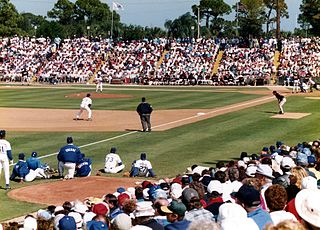
Spring training is the preseason in Major League Baseball (MLB), a series of practices and exhibition games preceding the start of the regular season. Spring training allows new players to try out for roster and position spots, and gives established players practice time prior to competitive play. Spring training has always attracted fan attention, drawing crowds who travel to the warm climates of Arizona and Florida to enjoy the weather and watch their favorite teams play.

The Tampa Bay area is home to many sports teams and has a substantial history of sporting activity. Most of the region's professional sports franchises use the name "Tampa Bay", which is the name of a body of water, not of any city. This is to emphasize that they represent the wider metropolitan area and not a particular municipality and was a tradition started by Tampa's first major sports team, the original Tampa Bay Rowdies, when they were founded in 1975.
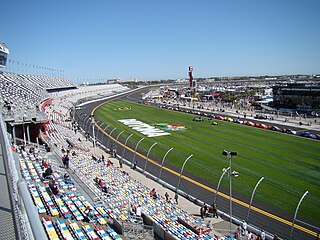
The U.S. state of Florida has three National Football League teams, two Major League Baseball teams, two National Basketball Association teams, two National Hockey League teams, two Major League Soccer teams and 13 NCAA Division I college teams.
The Tampa Spartans football program was an intercollegiate American football team for the University of Tampa (UT) located in Tampa, Florida, that began play in 1933. The program competed against other small college programs in the forerunner of today's NCAA Division II for almost forty years before moving to the top level of NCAA Division I as an independent in 1971. Successfully competing against top college programs as a much smaller school put an enormous strain on the university's finances, and the school decided to discontinue football after the 1974 season.
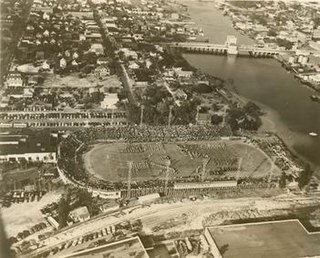
Phillips Field was a medium-sized stadium located on the west bank of the Hillsborough River across from downtown Tampa, immediately adjacent to the University of Tampa. It opened on October 4, 1937 and was the home field of the University of Tampa Spartans football program from 1937 to 1967. The facility was named for local businessman I. W. Phillips, who donated the land to the school so that the Spartans would not have to share nearby Plant Field, which was often unavailable due to its use for many different sports and community events.
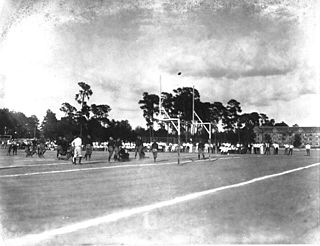
Fleming Field was the first on-campus home for the football and baseball teams representing the University of Florida in Gainesville. Construction began in 1910, and the facility debuted as the home field for Florida Gators outdoor sports programs during the spring semester of the 1910-1911 academic year.
The University of South Florida athletic facilities are the stadiums and arenas the South Florida Bulls use for their home games and training. The University of South Florida currently sponsors 19 varsity athletic teams and has 11 facilities in the designated Athletics District on or adjacent to its Tampa campus, one on its St. Petersburg campus, and one elsewhere in Tampa. 18 of the 19 teams have some sort of facility in the USF Athletics District.














